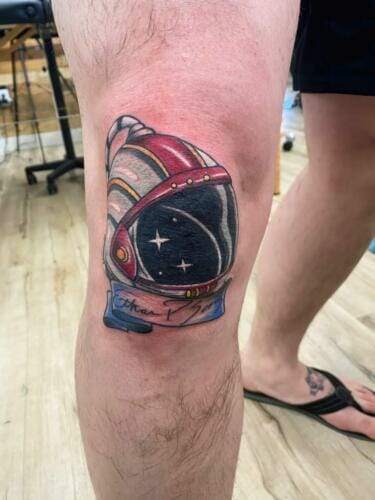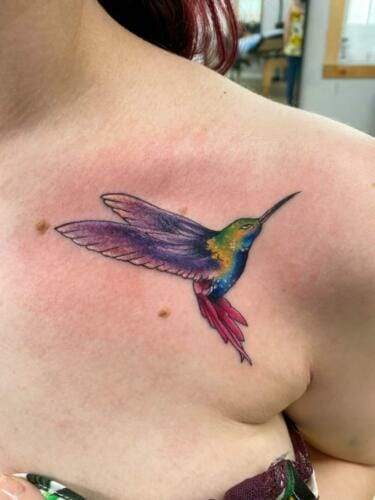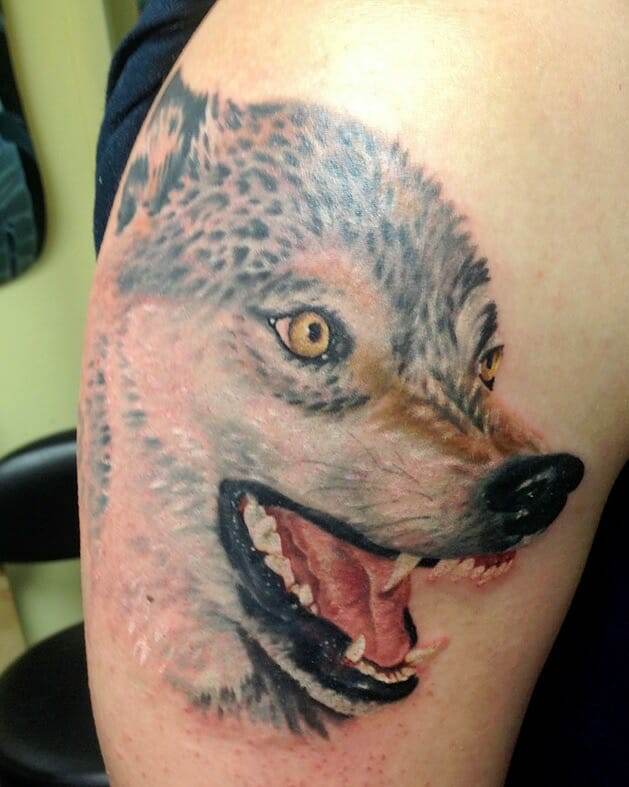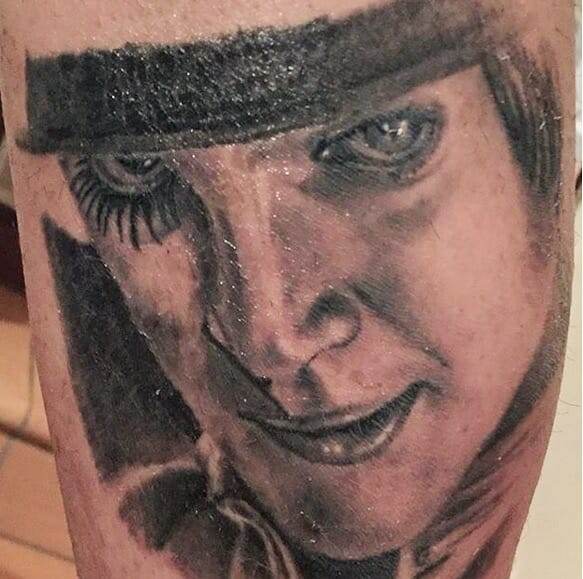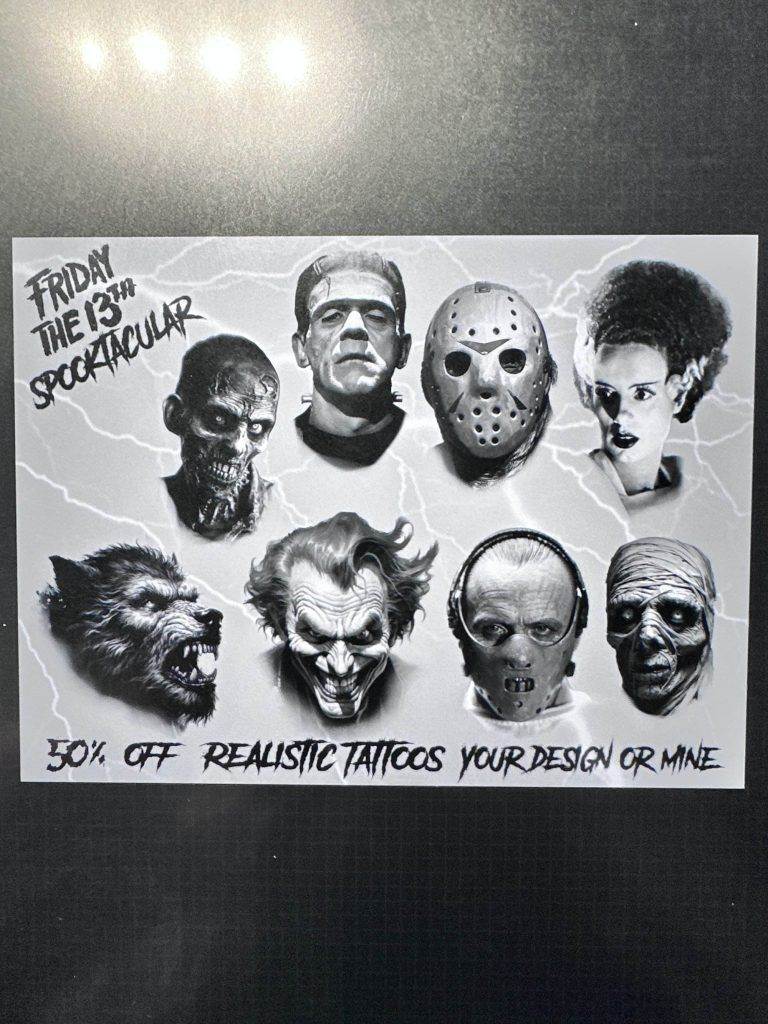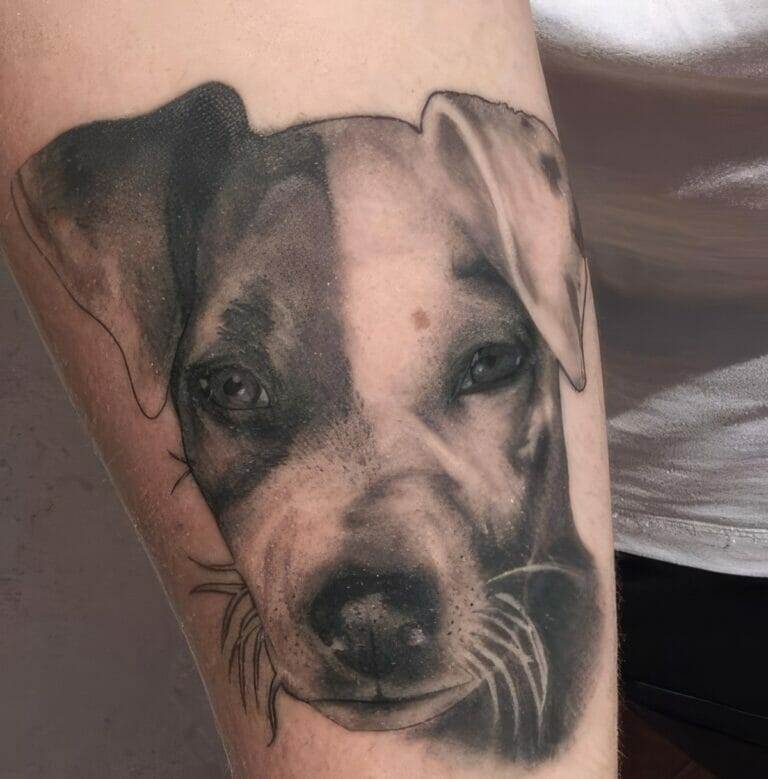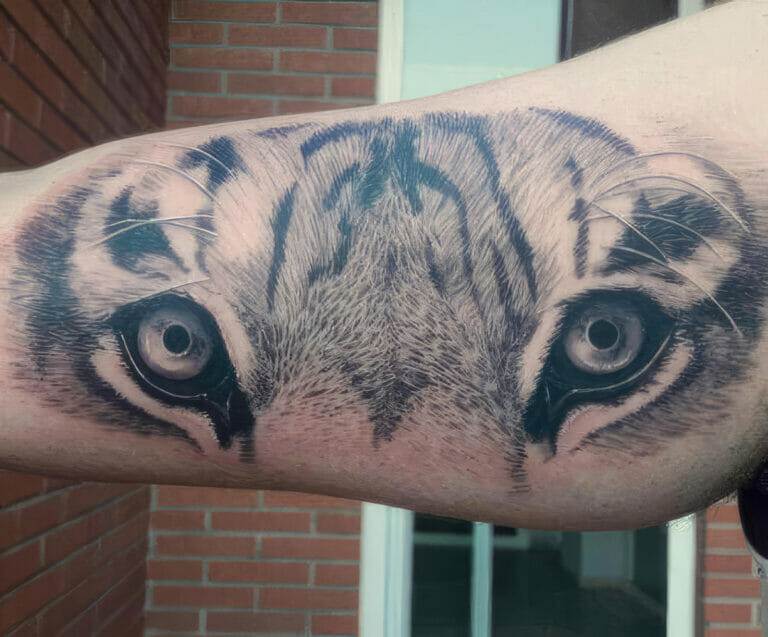
Realistic tattoos have become increasingly popular in recent years, captivating the attention of tattoo enthusiasts and artists alike. Unlike traditional tattoos, which often feature bold lines and vibrant colors, realistic tattoos aim to replicate the appearance of real-life objects or scenes with incredible detail and precision. From portraits of loved ones to intricate depictions of nature and mythical creatures, realistic tattoos have the power to bring art to life on the skin.
So why are people drawn to realistic tattoos? One reason is the desire for self-expression. Tattoos have long been a way for individuals to showcase their unique personalities and experiences, and realistic tattoos take this concept to a whole new level. By choosing a realistic tattoo, individuals can immortalize their passions, memories, or loved ones in a way that feels personal and authentic.
Additionally, realistic tattoos offer a sense of permanence and timelessness. Unlike other art forms that can fade or deteriorate over time, tattoos are a lasting testament to one’s identity and beliefs. Realistic tattoos, in particular, have the ability to capture a moment or emotion in such detail that it becomes etched into the skin forever. This sense of permanence can be incredibly empowering for individuals seeking to commemorate something meaningful in their lives.
The Art of Realism: Techniques and Styles
Creating a realistic tattoo requires a high level of skill and expertise. Tattoo artists must possess a deep understanding of human anatomy, light and shadow, and color theory in order to accurately replicate the appearance of real-life objects on the skin. They use various techniques and styles to achieve this level of realism.
One technique commonly used in realistic tattoos is shading. By carefully layering different shades of ink, tattoo artists can create depth and dimension, giving the illusion of three-dimensionality on a two-dimensional canvas. This technique is particularly effective in portrait tattoos, where capturing the subtle nuances of a person’s face is crucial.
Another technique used in realistic tattoos is stippling. Stippling involves creating small dots or dashes with the tattoo needle to mimic the texture and appearance of natural elements such as fur, feathers, or foliage. This technique adds a level of detail and realism that cannot be achieved with traditional shading techniques alone.
In terms of styles, there are several different approaches to realistic tattoos. Some artists prefer a hyper-realistic style, where every minute detail is replicated with precision. Others may opt for a more illustrative or painterly style, using bold brushstrokes and vibrant colors to create a sense of realism. Ultimately, the style chosen by the artist depends on their personal aesthetic and the preferences of the client.
From Pencil to Skin: The Process of Creating Realistic Tattoos
Creating a realistic tattoo is a meticulous and time-consuming process that requires careful planning and execution. The process typically begins with a consultation between the client and the tattoo artist, where they discuss the design, placement, and size of the tattoo. Once the design is finalized, the artist will create a stencil or transfer of the design onto the client’s skin.
Next comes the actual tattooing process. The artist will use a tattoo machine equipped with fine needles to inject ink into the skin. They will carefully follow the lines and contours of the design, paying close attention to detail and ensuring that each stroke is precise. Depending on the size and complexity of the tattoo, this process can take several hours or even multiple sessions to complete.
Throughout the tattooing process, the artist will periodically wipe away excess ink and blood to ensure that they have a clear view of their work. They may also make adjustments or corrections as needed to ensure that the final result is as accurate and realistic as possible.
The Importance of Reference Material in Realistic Tattoos
Reference material plays a crucial role in creating realistic tattoos. Tattoo artists often rely on photographs, drawings, or other visual references to accurately replicate the appearance of real-life objects or scenes. These references provide a blueprint for the artist to follow, ensuring that the final tattoo closely resembles the intended subject.
Finding the right reference material is essential for achieving a high level of realism in tattoos. Artists may spend hours scouring through books, magazines, or online resources to find the perfect reference image. They may also take their own photographs or create their own drawings to use as reference material.
When choosing reference material, artists look for images that capture the subject from multiple angles and in different lighting conditions. This allows them to understand how light and shadow interact with the subject, which is crucial for creating a realistic tattoo. Additionally, artists may use multiple reference images to capture different aspects of the subject, such as its texture, color, or form.
Realism in Portraiture: Capturing the Essence of a Person
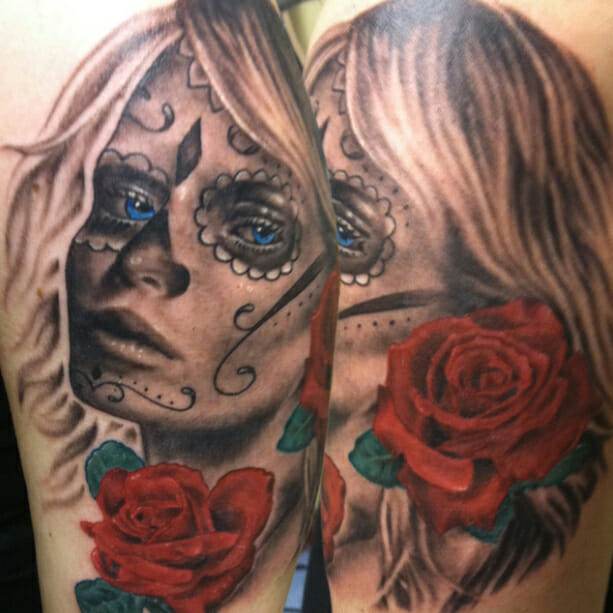
One of the most powerful applications of realistic tattoos is in portraiture. Portraits have long been a popular subject in art, as they allow artists to capture the essence of a person and immortalize their likeness. Realistic portrait tattoos take this concept to a whole new level by bringing these portraits to life on the skin.
Realistic portrait tattoos require a high level of skill and attention to detail. Tattoo artists must accurately replicate the features and expressions of the subject, capturing their likeness in such detail that it becomes instantly recognizable. This level of precision requires a deep understanding of human anatomy and facial proportions.
When creating a realistic portrait tattoo, artists often rely heavily on reference material. They study photographs or other visual references of the subject from multiple angles, paying close attention to details such as facial features, skin tone, and expression. This allows them to accurately replicate these details in the tattoo, resulting in a lifelike representation of the person.
Realistic portrait tattoos can hold deep emotional significance for both the wearer and the artist. For the wearer, it is a way to honor a loved one or commemorate a special memory. For the artist, it is an opportunity to create a lasting tribute to someone’s life or legacy. The emotional impact of these tattoos is often what makes them so powerful and meaningful.
The Power of Realism in Nature-Inspired Tattoos
Nature has long been a source of inspiration for artists, and realistic tattoos are no exception. Realistic nature-inspired tattoos have the power to bring the beauty and wonder of the natural world to life on the skin. From delicate flowers to majestic landscapes, these tattoos capture the essence of nature in stunning detail.
Realistic nature-inspired tattoos often feature intricate details such as petals, leaves, or feathers. Tattoo artists use techniques such as stippling or shading to replicate the texture and appearance of these natural elements, creating a sense of depth and realism. They also pay close attention to color, using a wide range of hues and tones to accurately depict the vibrant colors found in nature.
One of the advantages of realistic nature-inspired tattoos is their versatility. They can be small and subtle, or large and elaborate, depending on the client’s preferences. They can also be combined with other elements such as animals or symbols to create a more personalized design.
Realism in Fantasy Tattoos: Bringing Mythical Creatures to Life
Fantasy tattoos allow individuals to bring their wildest imaginations to life on their skin. Realistic fantasy tattoos take this concept even further by merging fantasy elements with a high level of realism. From dragons and unicorns to fairies and mermaids, these tattoos allow individuals to showcase their love for mythical creatures in a way that feels authentic and believable.
Creating realistic fantasy tattoos requires a combination of artistic skill and imagination. Tattoo artists must possess a deep understanding of human anatomy and animal physiology in order to accurately depict these creatures. They also need to have a strong sense of design and composition to ensure that the final tattoo is visually appealing and balanced.
Realistic fantasy tattoos often feature intricate details such as scales, feathers, or fur. Tattoo artists use techniques such as shading or stippling to replicate the texture and appearance of these elements, creating a sense of realism. They also pay close attention to color, using a wide range of hues and tones to accurately depict the vibrant colors often associated with fantasy creatures.
Realism in Surreal Tattoos: Merging Reality and Imagination
Surreal tattoos offer a unique blend of reality and imagination, creating a sense of wonder and intrigue. Realistic surreal tattoos take this concept to the next level by merging realistic elements with fantastical or dreamlike elements. These tattoos challenge the boundaries of what is possible, creating a visual narrative that is both captivating and thought-provoking.
Creating realistic surreal tattoos requires a high level of creativity and artistic skill. Tattoo artists must possess a deep understanding of composition, perspective, and symbolism in order to effectively convey the surreal elements in the tattoo. They also need to have a strong sense of design and color theory to ensure that the final tattoo is visually striking and cohesive.
Realistic surreal tattoos often feature juxtapositions of different elements or scenes, creating a sense of visual tension or contradiction. They may also incorporate symbolic imagery or abstract elements to convey deeper meanings or emotions. These tattoos are often open to interpretation, allowing individuals to find their own personal connection or narrative within the design.
The Role of Color in Realistic Tattoos
Color plays a crucial role in realistic tattoos, adding depth, dimension, and vibrancy to the design. Tattoo artists use a wide range of colors and tones to accurately replicate the appearance of real-life objects or scenes. They carefully select colors that complement each other and enhance the overall realism of the tattoo.
When choosing colors for a realistic tattoo, artists often refer to their reference material for guidance. They study the colors and tones found in the subject, paying close attention to how light and shadow interact with these colors. This allows them to accurately replicate the appearance of the subject and create a sense of depth and realism.
In addition to accuracy, artists also consider the emotional impact of color in their tattoos. Different colors evoke different emotions and can convey different meanings or moods. For example, warm colors such as red or orange may evoke feelings of passion or energy, while cool colors such as blue or green may evoke feelings of calmness or tranquility. By carefully selecting and combining colors, artists can enhance the emotional impact of their tattoos.
The Emotional Impact of Realistic Tattoos
Realistic tattoos have the power to evoke strong emotions and create deep connections between the wearer and the artwork. Whether it’s a portrait of a loved one, a depiction of a cherished memory, or a representation of a personal passion, these tattoos often hold deep emotional significance for the wearer.
For many individuals, realistic tattoos serve as a form of self-expression and empowerment. They allow individuals to showcase their unique identities, beliefs, or experiences in a way that feels personal and authentic. These tattoos can also serve as reminders of personal growth or overcoming challenges, providing a source of inspiration and strength.
Realistic tattoos can also have a profound impact on others who view them. They can spark conversations, elicit curiosity, or even inspire others to get their own tattoos. These tattoos have the power to create connections between individuals who may have never met otherwise, fostering a sense of community and shared experiences.
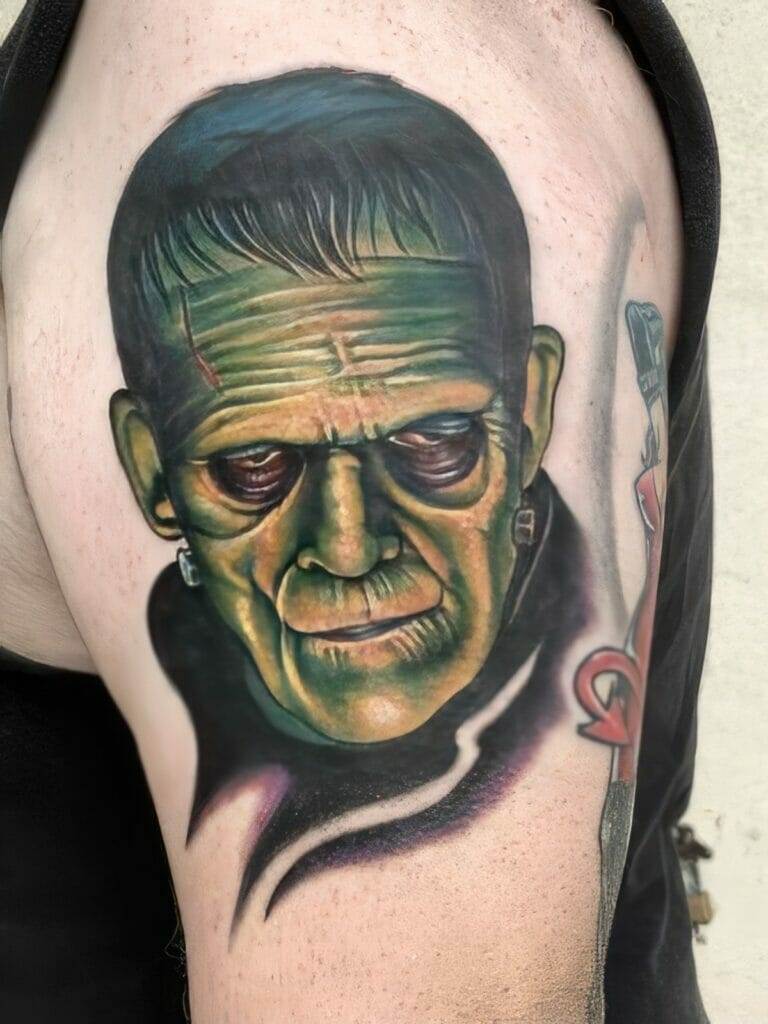
The Enduring Magic of Realism in Tattoo Art
Realistic tattoos have captured the hearts and imaginations of tattoo enthusiasts around the world. From portraits that capture the essence of a person to nature-inspired tattoos that bring the beauty of the natural world to life, these tattoos have the power to create lasting memories and connections.
The enduring appeal of realism in tattoo art lies in its ability to merge art and life in a way that feels personal and authentic. Realistic tattoos allow individuals to showcase their passions, memories, or loved ones in a way that is visually striking and emotionally impactful. They serve as a lasting testament to one’s identity and beliefs, creating a sense of permanence and timelessness.
As the popularity of realistic tattoos continues to grow, so does the level of skill and creativity among tattoo artists. These artists push the boundaries of what is possible, constantly striving to create tattoos that are more detailed, more vibrant, and more realistic than ever before. The magic of realism in tattoo art is here to stay, captivating the hearts and minds of tattoo enthusiasts for years to come.

